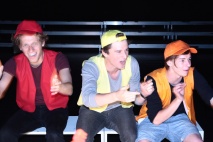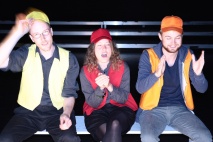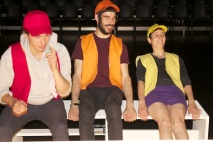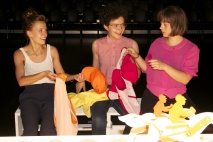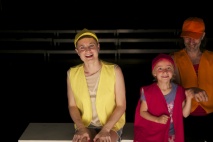Kentucky Derby: Unterschied zwischen den Versionen
Bilex (Diskussion | Beiträge) |
Bilex (Diskussion | Beiträge) |
||
| Zeile 27: | Zeile 27: | ||
==Mechanics== | ==Mechanics== | ||
To get close to the original game, it is important to copy the silly movement of the horses which mainly consists of head and tail movement. After rejecting several drive concepts using rods and wheels | |||
==CAD & Manufacturing== | ==CAD & Manufacturing== | ||
Version vom 27. Juni 2015, 16:52 Uhr
| Kentucky Derby Release status: stable [box doku] | |
|---|---|
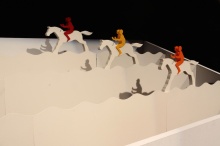
| |
| Description | PostInteractive Horse Race |
| Author(s) | A.B. (Bilex) |
| Platform | Gallop |
Information
Kentucky Derby is a modification of the well known fun fair game of the same title. In contrast to the original game, Kentucky Derby provides a genuine interactive situation while concealing the definite mechanism of interaction and feedback.
In the absence of an interface device the participants start to discover ways of interaction to speed up their horse in order to become a winner. The movement of the horses is neither random nor they are controlled by an algorithm that is proccessing sensor-generated input data. Kentucky Derby works with a performative closed-loop system: The participants are observed by cameras and a person outside the room determines the game. Next to positive feedback (horse is going forward) the participants can be penalized by reversed movement, which is not possible in the originale game.
As most participants are familiar with interactive art, body and hand movement, clapping, and shouting the color of the team they have chosen before, are common approaches to get into the inner working of the game.
Mechanics
To get close to the original game, it is important to copy the silly movement of the horses which mainly consists of head and tail movement. After rejecting several drive concepts using rods and wheels
CAD & Manufacturing
Kentucky Derby was designed with Autodesk Inventor. The horses were done with the CNC-Fräse and are made out of 19mm MDF. To achieve a homogenous and glossy finish, several layers of primer and paint were applied. The riders (3mm plexiglass) and the wave-style track cover (3,5mm MDF) were laser-cut. Most mechanical parts were manufactured with the help of the workshop of the physics department at my university.
Electronics
Competitors & Winners...
... while being part of Kentucky Derby. Everyone is eager to finish first!
Video
Detailed HD footage of a reference run can be found on Vimeo
Thanks to...
... these companies which supported this project by providing discount or free samples:
- Nanotec GmbH Steppermotors!
- MÄDLER GmbH Great shop for machine parts like pulleys, gears..!
- IGUS GmbH Low-Budget linear guides!









